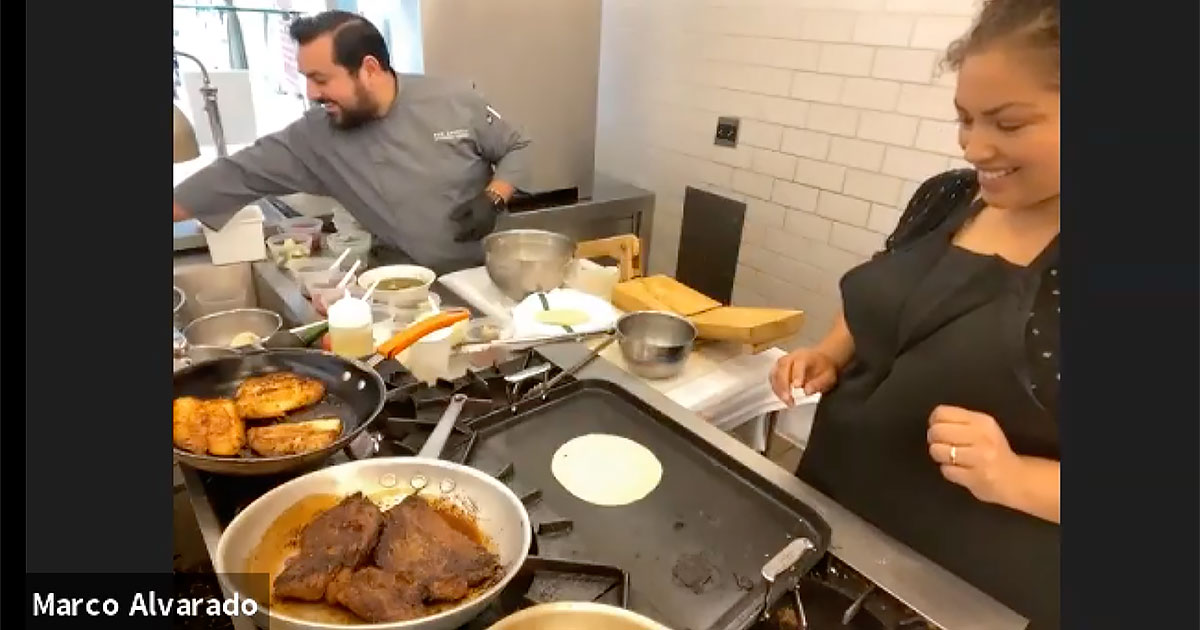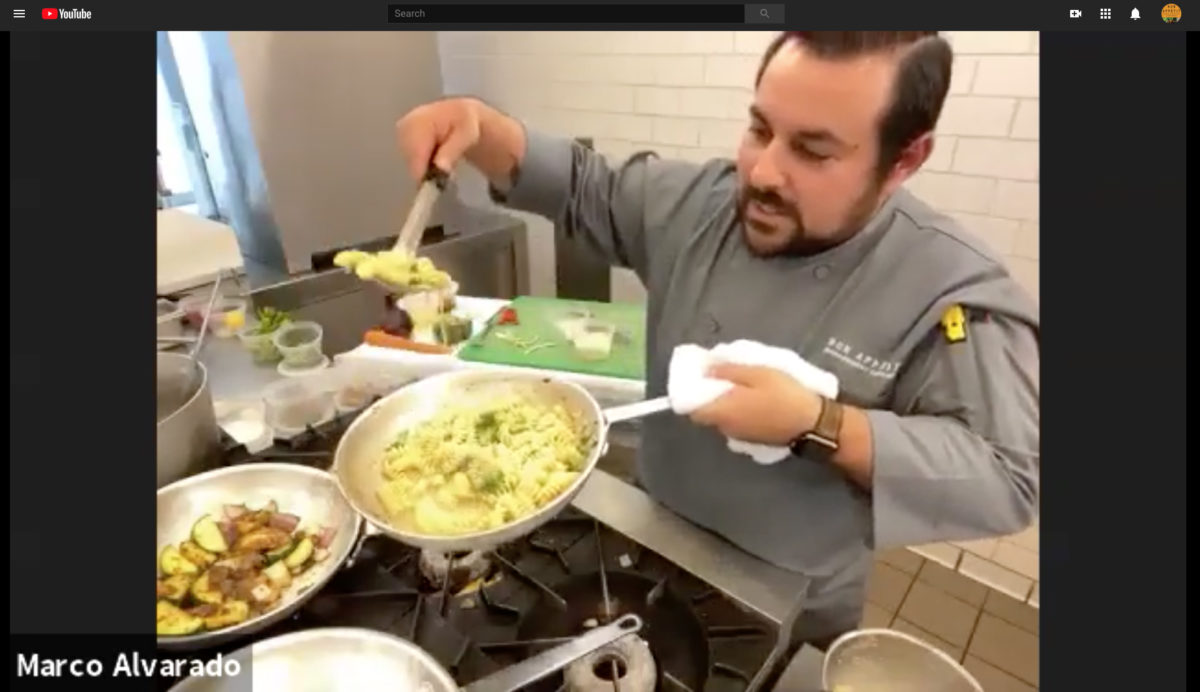University of the Pacific Alumni Cook Along with Executive Chef Marco Alvarado
University of the Pacific’s Alumni Association has always offered a hearty roster of creative programming to engage alumni. In the time of sheltering in place, much of that programming has gone virtual. When the Alumni Association reached out to Bon Appétit Resident District Manager Sia Mohsenzadegan and Executive Chef Marco Alvarado to do a “Lunch & Listen” cooking class, they jumped at the chance to brainstorm ideas.
For the first “Kooped-Up Kitchen” in April, Marco chose a simple meal: salad and pasta carbonara with added vegetables for a plant-forward twist. Since many people are limiting their grocery shopping these days, Marco wanted to demonstrate a simple recipe that could be made with common kitchen staples as well as accommodate ingredient swaps.
The association set up a remote video rig in UOP’s DeRosa University Center kitchen, from which Marco is still feeding a few students who are sheltering in place on campus — as well as making and delivering daily hot meals to first responders in San Joaquin General Hospital in Stockton. Marco provided a base recipe in advance, and many of the class participants chose to cook right alongside him in their home kitchens. The Alumni Association offered a moderator for the classes, who monitored participant questions and engaged Marco in conversation as he cooked. This meant Marco could offer real-time advice as people cooked and answer questions about technique.
The alumni loved it, and the Association asked for a second, taco-focused class in May. For this one, Marco decided to share the spotlight by bringing in a special guest: his wife Deisy!
She frequently prepares Mexican food at home for the family (the couple has two boys), as it’s part of her cultural roots, so the class participants benefited from the couple’s shared culinary expertise. They tag-teamed making three types of tacos: carne asada, blackened grilled fish, and vegetable (bell peppers, red onion, zucchini, and mushrooms). They also made a crunchy cabbage coleslaw mix for the fish tacos, two homemade salsas (charred tomato-chile de arbol and roasted tomatillo-serrano), and tortillas made from scratch!

Marco called on his wife, Deisy, to help demo tacos with all the fixings, and even from-scratch tortillas!
Responses to the second class were positive as well. The association posted the recordings of the carbonara and taco classes to YouTube, and Marco hopes to offer another class in the future, perhaps focused on plant-forward summertime outdoor grilling.
“I’d love to teach people how to get really great flavors out of a mushroom or a cabbage,” he said. “That’s usually how we eat at home, and lately I’ve gotten questions from lots of friends and family about how to use the vegetables in their fridges.”
Marco’s advice to other chefs thinking of doing a remote cooking class:
- Like any good chef, prepare your mise en place in advance.
- Write down a step-by-step recipe for yourself. Even if you know it by heart, it will keep you on track in front of the camera and help you express your ideas and expertise more clearly so you don’t confuse your students.
- Share the written recipe with your students in advance so they can follow along.
- Keep it simple. If your explanations get too complicated, you’ll confuse your students.
- If possible, work with an off-camera moderator who can engage you in conversation while you cook and monitor participant questions. It keeps your audience engaged and makes the program more dynamic!
- Talk about what you know and share your own perspective and tastes so people can get to know you.
- Special on-camera guests like family members are also great!
